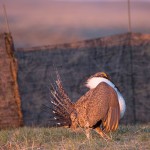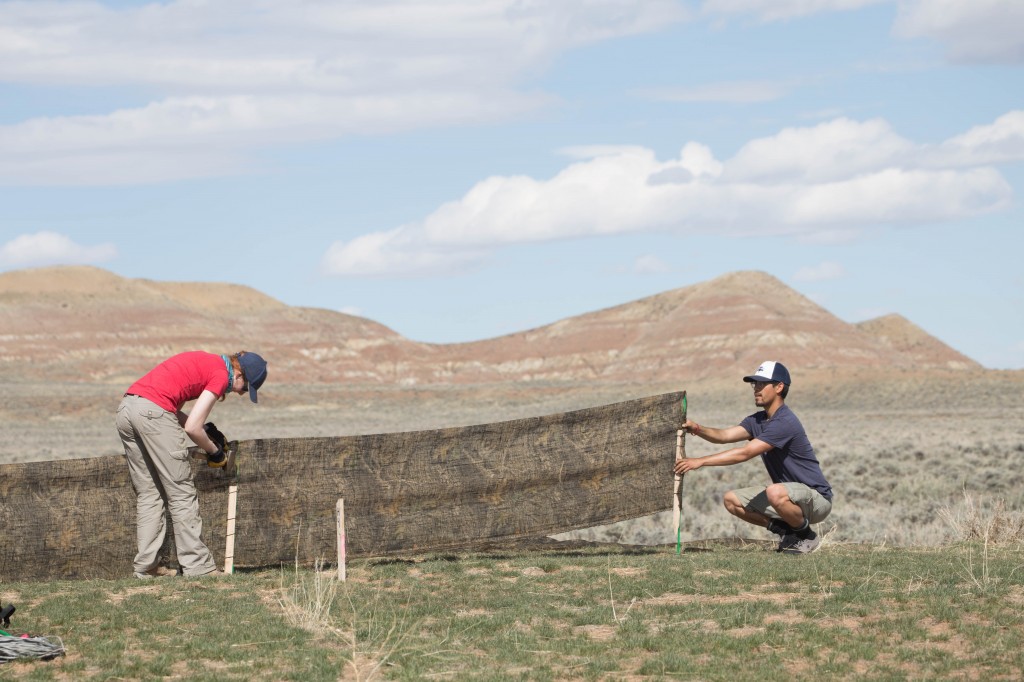 Now that it is mid-April, most hens have mated and started their nests nests and we are past the peak in female attendance on the leks. This gives us the opportunity to study how the male sage-grouse react to stimuli we provide without competition or interference from real hens. That means Experiment Time!
Now that it is mid-April, most hens have mated and started their nests nests and we are past the peak in female attendance on the leks. This gives us the opportunity to study how the male sage-grouse react to stimuli we provide without competition or interference from real hens. That means Experiment Time!
This year Ryane has designed a study to look at how the males use public information on the lek. We usually think of leks, particularly classical leks like the sage-grouse have, as being very open where everyone can see what everyone else is doing. This isn’t necessarily true of all leks, even sage-grouse leks. We tend to choose more open breeding grounds because it makes our job of tracking and IDing birds much easier, but some peripheral males display from the sage, and some entire leks lack a real central clearing.
Our goal is to understand more about how males take into account various cues that a female is around- whether it’s the sound of a female nearby or the sounds of other males courting a female. To isolate these, Ryane designed a barrier that obscures part of the lek from some males. Then we can provide a stimulus to one side (sound playback from our rock speakers or sending the fembot out of a blind), and watch how males on the other side of the barrier react.
Note that the birds can (and do) go around, over, and even through gaps in the barrier, so that this isn’t constraining their movements in any way, and the barriers are typically up for only a day or two at a time.
What can we learn from this? It will help us learn more about the importance of social responsiveness in animal courtship and mating. Much of our work over the past years has been to demonstrate that it’s not just how hard males work for the female, but that males also differ in how sensitive they are to changes in the social environment, and this can also relate to differences in their success with females. It will also tell us more about the importance of the sensory environment- the topic of our next grant proposal!

